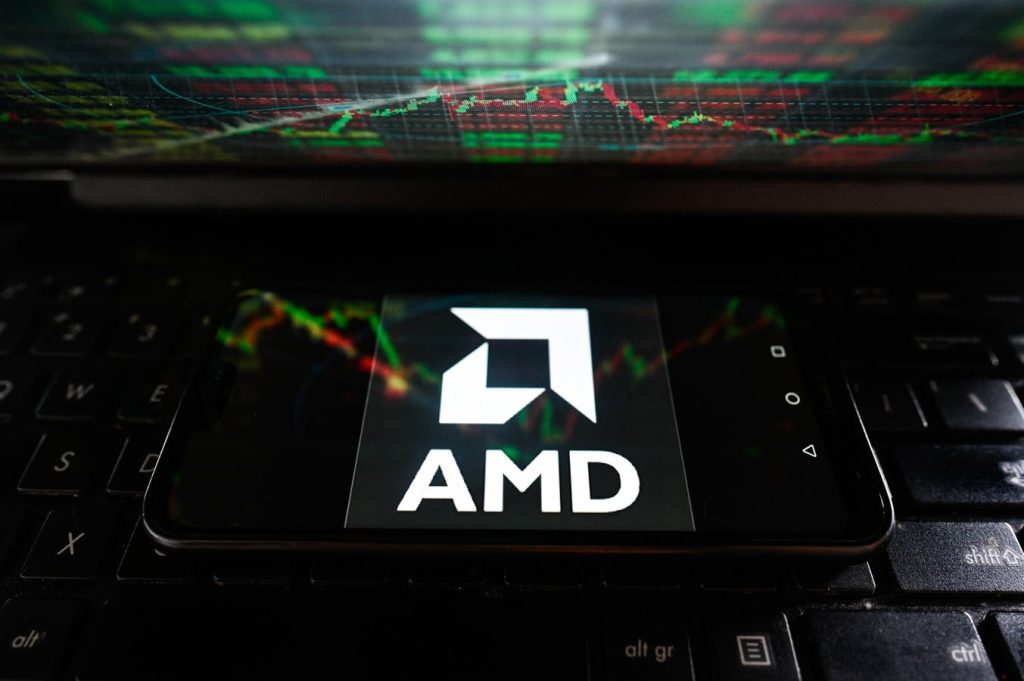Advanced Micro Devices stock (NASDAQ
NDAQ
Although AMD’s GPUs have typically been used more for gaming and professional applications compared to Nvdia’s chips, which have remained the go-to GPUs for accelerated computing applications, AMD is also now focusing on winning over the AI market. The company recently unveiled the MI300X chip which is targeted specifically at large language model training and inference for generative AI workloads. The headline specs of the chip look favorable compared to Nvidia’s offerings. For example, the chip offers 192 gigabytes memory capacity, compared to Nvidia’s H100 data center GPU which has 120 GB. The chip also apparently costs less compared to Nvidia’s chip. This should imply that AMD’s new processors can train more sizable large-language models for generative AI applications, in a more cost-effective manner. The product is expected to officially launch around the first week of December, with production ramping up over 2024. DigiTimes has previously reported that foundry major TSMC – which produces most of the GPUs on sale today and offers an advanced chip packaging technology called Chip on Wafer on Substrate (CoWoS) – indicated that AMD’s new chips using the CoWoS technology could be as much as half of Nvidia’s CoWoS-equipped GPU output. This is notable, considering that Nvidia currently dominates the compute-focused GPU market, with over 90% market share.
Amid the current backdrop, AMD stock has also shown strong gains of 40% from levels of $90 in early January 2021 to around $125 now, vs. an increase of about 20% for the S&P 500 over this roughly 3-year period. However, the increase in AMD stock has been far from consistent. Returns for the stock were 57% in 2021, -55% in 2022, and 89% in 2023. In comparison, returns for the S&P 500 have been 27% in 2021, -19% in 2022, and 19% in 2023 – indicating that AMD underperformed the S&P in 2022. In fact, consistently beating the S&P 500 – in good times and bad – has been difficult over recent years for individual stocks; for heavyweights in the Information Technology sector including AAPL, MSFT, and NVDA, and even for the megacap stars GOOG, TSLA, and AMZN. In contrast, the Trefis High Quality Portfolio, with a collection of 30 stocks, has outperformed the S&P 500 each year over the same period. Why is that? As a group, HQ Portfolio stocks provided better returns with less risk versus the benchmark index; less of a roller-coaster ride as evident in HQ Portfolio performance metrics. Given the current uncertain macroeconomic environment with high oil prices and elevated interest rates, could AMD face a similar situation as it did in 2022 and underperform the S&P over the next 12 months – or will it see a strong jump?
AMD’s valuation isn’t exactly cheap at the current market price of $122 per share, considering that the stock trades at about 45x consensus 2023 earnings, despite revenue expected to contract for the year. Moreover, Nvidia aims to solidify its lead in the AI chip sector by creating an ecosystem centered on its GPU chips via the development of proprietary programming languages and software, a move intended to enhance customer retention. However, the AI processor space is still in its infancy and it is unlikely to be a “winner takes all” type of market. AMD still has a good shot at scaling up if its new chipsets perform as promised. AMD previously estimated that the AI accelerator market could expand from about $30 billion this year to over $150 billion in 2027, marking a 50% annual growth rate, and this gives the company considerable room for growth. We value AMD stock at about $122 per share, which is roughly in line with the current market price. See our analysis on AMD Valuation: Is AMD Stock Expensive Or Cheap? for more details on what’s driving our price estimate for AMD. Also, check out our analysis of AMD Revenue for more details on the company’s key revenue streams.
Invest with Trefis Market Beating Portfolios
See all Trefis Price Estimates
Read the full article here














